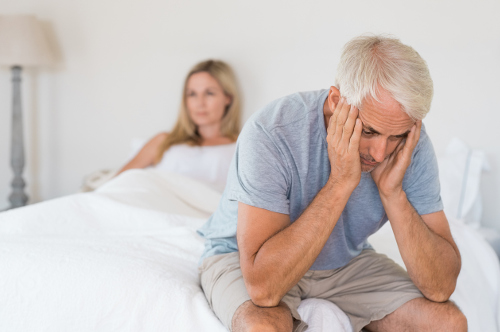 I’ve known Ralph for close to 30 years.
I’ve known Ralph for close to 30 years.
A year younger than me, he always confided in me. When I met up with him a couple of weeks ago, Ralph wasn’t his usual self. Turns out he was worried about something that was happening regularly to him in the recent past— pelvic pain during sex. As I suspected, he had not discussed this with his wife or doctor.
He also confided in me that he had difficult, painful, and frequent urination. And he had a dull pain in his bladder, groin, anus, and abdomen areas.
I told him he had to see his doctor, because this sounded serious. After a battery of tests, Ralph called me up and told me his diagnosis: prostatitis. Also referred to as male pelvic pain.
What Is Prostatitis (Male Pelvic Pain)?
Prostatitis is an inflammation of the prostate. It is the most common prostate condition in men below 50 years of age. (Ralph is 44 years old.) Prostatitis can be acute (where the pain is more severe) or chronic. In cases where there isn’t any bacterial infection, it is called chronic pelvic pain syndrome (CPPS).
Prostatitis Causes and Diagnosis
So what causes prostatitis?
The most common risk factors are the usual suspects of diabetes and poor immune function. An enlarged prostate, urinary tract defects, and unhygienic sex can also lead to inflammation. And yes, an earlier episode of prostatitis can make the problem recur.
One of the routine tests done for patients with any problem of the prostate is the prostate-specific antigen (PSA) test. Please note that though prostatitis is associated with high PSA levels, it has no relationship to cancer (which also has high PSA levels).
Having said that, prostatitis itself can lead to complications, and even death, so treatment and management are crucial.
When to See a Doctor
Many men go to a doctor when the symptoms are severe (acute stage). However, as the symptoms subside, they tend to go easy on the medication, or even stop it halfway. This is a big mistake, as the acute condition can turn chronic. So make sure you stick to the instructions your doctor and pharmacist give you about your meds. But of course you can supplement your treatment plan with some complementary alternative remedies.
How to Manage Prostatitis with Alternative Remedies
Management of chronic prostatitis is basically focused on relieving pain. As constipation exaggerates the pain, eating a high-fiber diet (including fruit, vegetables, and whole grain items), getting plenty of hydration, and using other natural stool softeners, such as mineral oil, will help reduce the pressure on the prostate.
Soaking in a hot bath is recommended to help relax the muscles around the prostate and ease the pain.
And, even though you may be in discomfort, you shouldn’t stay in bed all day or sit for too long. Doing some aerobic exercise (aka cardio) every day could help reduce chronic prostatitis symptoms. I’m talking anything that gets your heart pumping and increases your breathing rate, like swimming, walking briskly, going for a bike ride, or jogging. If you don’t exercise already, start slow and increase the intensity as you go. You should aim for a minimum of 20 minutes a day of cardio.
Patience Is Key
The important thing to remember with male pelvic pain is to be patient and persist with pain management. That’s what Ralph did. He followed his doctor’s instructions and took all of his medication as prescribed. Plus, he gave some complementary natural solutions a try and found they did help ease his pain and discomfort. Be like Ralph and you could soon get back to your daily—pain-free—life!
Related Articles:
Fertility Diet: How to Increase Fertility
11 Home Remedies to Treat Prostate Problems
Source :
Giubilei, G., et al., “Physical Activity of Men With Chronic Prostatitis/Chronic Pelvic Pain Syndrome Not Satisfied With Conventional Treatments—Could it Represent a Valid Option? The Physical Activity and Male Pelvic Pain Trial: A Double-Blind, Randomized Study,” The Journal of Urology, Jan. 2007; 177(1); 159-165; http://www.sciencedirect.com/science/article/pii/S0022534706021537, last accessed July 7, 2017.
